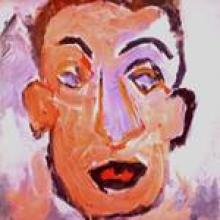Introductory remarks
Eyolf Østrem
What is this shit?! wrote Greil Marcus in his Rolling Stone review of this album, and there is something to that question. There are only three possible explanations to the mix of the blatant sentimentality of I forgot more (and a bunch of others), the ludicrous chord changes of In search of Little Sadie, the duet between the old, nasal Dylan and the new country-crooner Dylan in The Boxer, which is fun on the first hearing, but gets quite dull already on the second (and I dont know what happens after the second hearing), and the best of them all All the tired horses, which brilliantly captures the mood of this album.
Either it was, as Dylan himself has explained, conceived as a collection of country standards, maybe inspired by the sessions with Johnny Cash in 1969. This would imply that its a serious effort. If so, its the best proof that his muse was silent at the moment (as Paul Williams asks: if the tracks that ended up on Self Portrait and Dylan were just warm-ups for the band, then where are the real tracks?).
Or it was, as Dylan himself has also explained, an attempt to shake off the annoying role of icon and voice of a generation that he felt he was being forced into and kept locked up in a big fuck you to everyone caring to take it as a provocation. But why then the effort? There are more sessions for these albums (counting also New Morning) than for any other Dylan album. And why the inclusion of tracks that are actually quite enjoyable, among the shit?
Or was it, perhaps, an ironic kick in the butt to the country idiom, and a clever, multi-level analysis of sentimentality and of his own music-making, where the packaging adds to the wit of the music?
I wish I could say that the third alternative is the correct answer, but I cant. What I can say is that Dylan was experimenting with his singing style, not only in the direction of country, but also a blues style which sounds new (and actually quite fresh!) in his oeuvre. They also seem to be having a good time, at least on some of the tracks (whereas others sound very uninspired). It is an amusing album, but not a good one
Postscript:
Having lived with this album for a couple of days now, while tabbing it, I have quite reluctantly reached the conclusion (insight is too strong a word) that the most interesting songs on the album are In search of little Sadie (heard in conjunction with Little Sadie, of course) and All the Tired Horses. They both stretch some limits that arent usually touched upon. Whats interesting about the Search for little Sadie, is that its a stylized search it sounds like (and is probably meant to sound like) Dylan sitting at home, searching for a melody, trying out things, discarding them on the way, and picking up the next thing to try out. But it isnt: its a planned progression through various stages, planned so as to sound erratic. At times it is genuinely erratic, of course, but only on the surface level: the chromatic progression of chords in the first half leads Dylan to melodic goals he cant have foreseen (which is evident from the recording lots of sliding-up-to the last note of a phrase, to make it fit the chord). But the course through the song is orderly enough to be labeled planned. This ambiguity puts the aesthetics both of improvised and of pre-planned music (which is to say: the entire history of Western Classical Music) under scrutiny, by using the one to nullify the other. What remains, may be crap, but at least its interesting crap (oh my, Im turning into a garbologist!)
Wigwam stretches limits too, but mostly those of patience.
Postscript II: I couldnt resist to put up this note, posted at r.m.d:
Hello-
Just picked this one up this afternoon. I have the following to say: That is $11.99 and 74 minutes of my life that Im never getting back.
Best,
~Ryan

